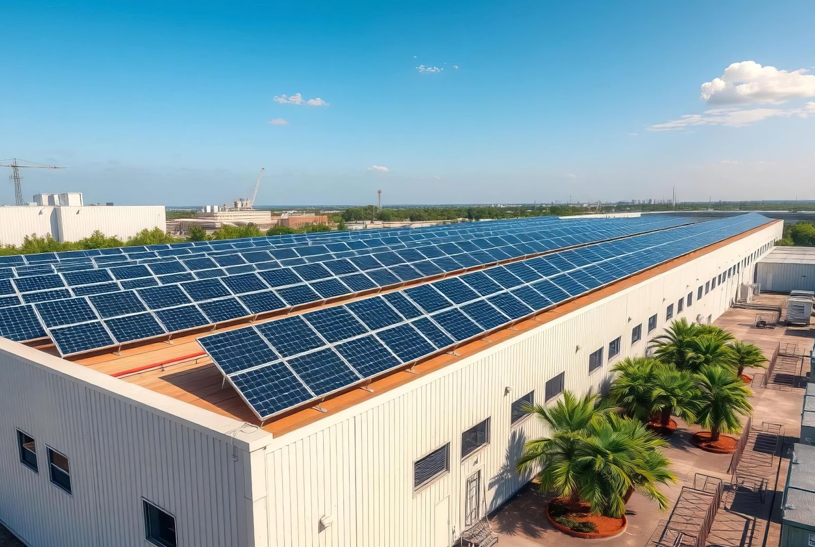New tech is changing how companies work, compete, and grow. Should you adapt to them?
Winston Churchill once said, “To improve is to change; to be perfect is to change often,” and, yes, that kind of thinking is exactly what today’s business leaders need. Things are changing fast, and waiting too long often means missing out. Adapting to change is part of being a strong leader. Business leaders who stay current can move faster, cut costs, and serve customers better.
Here are some transformative technologies you should explore to keep your business ahead of the curve:
1. Renewable Energy and Energy Independence
Energy is one of the biggest costs businesses face. But, of course, it’s also one of the biggest opportunities for change. The world is moving toward cleaner solutions, and companies that adopt renewable energy can lower costs, avoid future problems, and show they care.
One smart step is aiming for energy independence. It means producing your own power. It’s often through solar panels. Businesses can protect themselves from rising energy prices or sudden outages that way. Teaming up with commercial solar installers makes the shift smoother and more doable.
Beyond savings, using clean energy improves brand image and attracts customers who care about the planet. For forward-thinking leaders, it’s about building a stronger, more stable future.
2. Artificial Intelligence (AI) and Machine Learning
Artificial Intelligence (AI) refers to computer systems that can do tasks that normally need human thinking, like understanding language or solving problems. Machine learning is a part of AI where systems improve as they process more data, almost like learning from experience.
In business, AI and machine learning are changing the way decisions are made. They help companies find patterns in customer behavior, predict what people might buy next, and even personalize marketing. These tools also make it easier to automate everyday tasks like sorting emails or analyzing reports. Companies can save time, reduce errors, and make smarter choices without needing to guess or rely only on past experience with AI solutions.
3. Cloud Computing
Cloud computing means using the internet to store and access data, software, and tools instead of relying only on your computer or local servers. This technology gives businesses more flexibility because files and programs can be used from anywhere with an internet connection.
For modern companies, cloud computing supports remote work, online collaboration, and real-time updates. It also helps save money by reducing the need for physical hardware and IT maintenance. Businesses can scale up or down quickly based on demand, helping things run more smoothly. Cloud computing can help with storing large amounts of data or running customer service platforms.
4. Internet of Things (IoT)
The Internet of Things (IoT) is a network of smart devices that collect and share data through the internet. These devices include sensors, machines, vehicles, and even appliances that can “talk” to each other without human help.
In business, IoT is used to improve how things are tracked, monitored, and controlled. For example, in warehouses, sensors can check stock levels and send updates automatically. In manufacturing, machines can alert workers before problems happen, helping prevent downtime. IoT also supports better customer experiences by allowing real-time updates and faster service.
5. 5G Connectivity
5G is the newest version of wireless technology, offering much faster internet speeds and lower delays than older networks. It allows more devices to connect at once while keeping the connection strong and reliable.
For businesses, this means quicker data transfer, smoother video calls, and better performance for apps that need real-time updates. 5G supports remote work by improving mobile internet, which helps teams stay connected wherever they are. It also opens the door to using more advanced tools like augmented reality, virtual reality, and smart machines that rely on constant, fast data flow.
6. Blockchain
Blockchain is a digital system that records transactions in a way that’s secure, shared, and very hard to change. Instead of keeping information in one place, it stores data across a network of computers, making it easy to track and harder to tamper with.
In business, blockchain helps build trust and reduce errors. It’s used for things like secure payments, tracking products through the supply chain, and creating digital contracts that run automatically when conditions are met. These “smart contracts” cut out middlemen and speed up deals. Blockchain can also help companies prove where their materials come from, which is useful for safety, quality, and sustainability. It’s a smart way to protect data and improve how things get done.
7. Robotics and Automation
Robotics and automation involve using machines to handle tasks that are usually done by people. These systems can work around the clock, follow instructions exactly, and help cut down on mistakes.
In business, they’re often used in factories, warehouses, and even offices. For example, robots can move products, pack items, or help with assembly lines. In offices, software automation can handle things like sorting emails or processing invoices. This frees up workers to focus on more important tasks that require human thinking.
Robotics and automation allow companies can speed up their work, lower costs, and stay on track even when facing staff shortages.
8. Augmented Reality (AR) and Virtual Reality (VR)
Augmented Reality (AR) adds digital elements, like images or instructions, on top of the real world. Virtual Reality (VR), on the other hand, creates a fully digital environment that users can explore. Both are changing how businesses train workers, show products, and connect with customers.
Companies use AR to guide employees through tasks step by step or let shoppers “try on” items before buying. VR is great for training in safe, controlled spaces, like flight simulators or medical procedures. It’s also used for virtual tours of homes, hotels, or stores.
These tools help people learn faster, make better choices, and feel more connected, which can lead to better service, safer work, and stronger customer trust.
Turn Insight Into Action
The future belongs to those who act, not just observe. These transformative technologies aren’t just trends. They’re tools for real growth. Pick one that fits your goals and try it where it can make a real difference. Which tool will you put to work in your business today?


